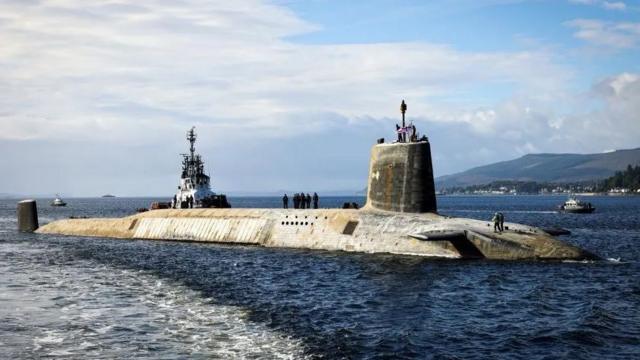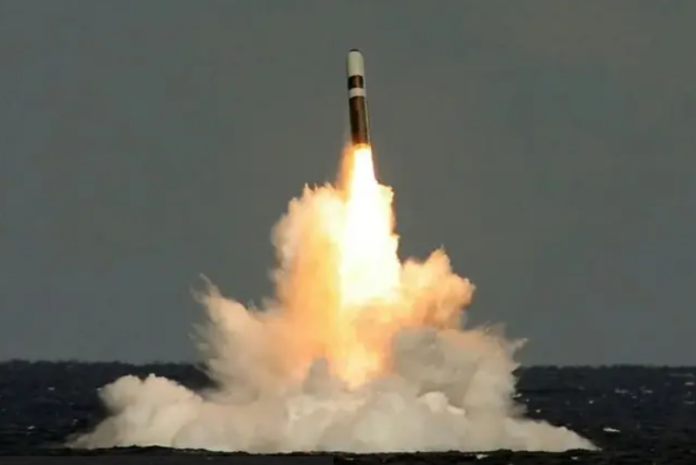The Trident's test launch from the royal fleet of the royal fleet has fallen in a row for the last eight years.
The latest test of the British nuclear missile was under the HMS Vanguard subordinate boat, with the Defense Minister of British Grant Shappps.
According to The Sun, which was the first to report failure, rocket launchers were refused, and it fell into the sea near the launch.
Nuclear warheads usually have a rocket patrol, but they are not adapted for test shots. There was no nuclear warhead during a test.
The British Defense Ministry has stated that the British nuclear restraint forces remain "safe, reliable and efficient", but for national security reasons refused to provide additional information about it.
However, the situation is unpleasant for the UK and the American manufacturer Trident.
British Trident missile tests are rare, not least because of their cost.
The price of each rocket is about £ 17 million (over $ 20 million), and the last test was in 2016. It also failed when the rocket rejected from the course.
The HMS Vanguard was observed on the board of the Defense Minister Grant Shapps and the Navy chairman.
The submarine has just undergone a repair that lasted more than seven years.
A defense source close to Shapps insisted that Trident “can be started in real conditions”, if needed.
"The problem that arose during the test was specific to the situation and would not have arisen during the fighting fire," the source said.
Later, a written statement of Shapps Minister is awaited.
The rocket had to fly several thousand kilometers and safely fall in the Atlantic between Brazil and West Africa. Instead, it fell into the ocean near the launch site.
During the unsuccessful test of 2016, the rocket was reported from HMS Vengeance off the Florida coast.
At that time, Trident II D5 rocket was to be released 6,000 kilometers on maritime purposes off the west coast of Africa, but it turned towards the United States.
The reasons for the wrong is a strict secret, but a high-ranking source in the Navy reported that the rocket malfunction occurred in flight after launching from the water.

Photo author, Royal Navy Signature to Photo, HMS Vanguard is one of the British atomic submarines that can carry nuclear weapons
The Labor Party called for guarantees of nuclear restraint.
Shadow Defense Minister John Hili said: "Trident's failure reports are concerned."
The nuclear disarmament campaign (CND) called it an expensive failure after reporting that the repair cost £ 500 million.
"We need to stop spending our money on it," said a group that is campaign for getting rid of nuclear weapons in Britain and around the world.
In the statement, the Ministry of Defense acknowledged that an anomaly occurred during the last launch. But it also said that HMS Vanguard and his crew "proved their full capacity" in their operations, and the trials "again confirmed the effectiveness of nuclear restraint."
The statement adds that Trident is the "most reliable system of weapons in the world", which has passed more than 190 successful tests.
HMS Vanguard is one of the four Vanguard atomic submarines that patrolled in 1994, and one of the ships was constantly in the sea.
Submarines are based on the royal naval fleet of Faslein in The Furt-Off-Clide and carry the Trident 2 D5 missiles built in the United States. While nuclear warheads are stored in the adjacent weapons of Kulport on Loch-Long.


